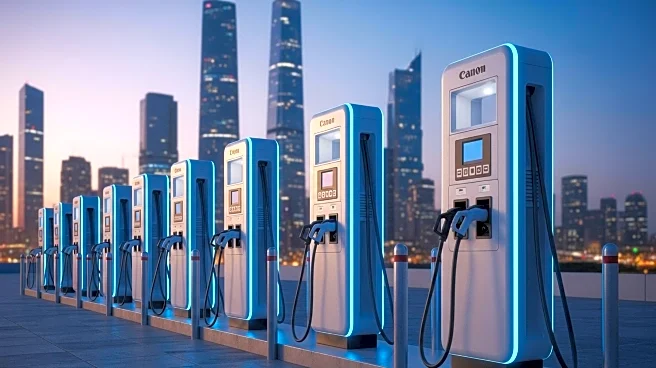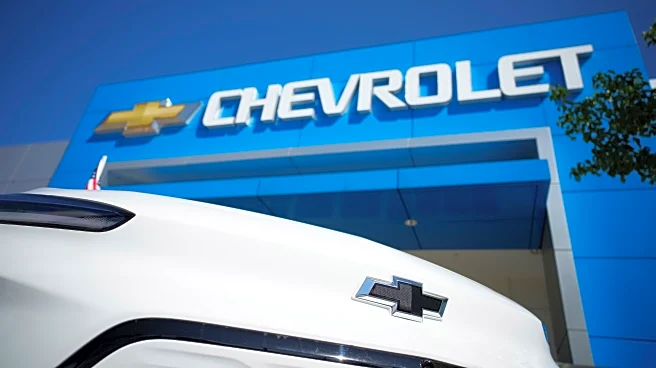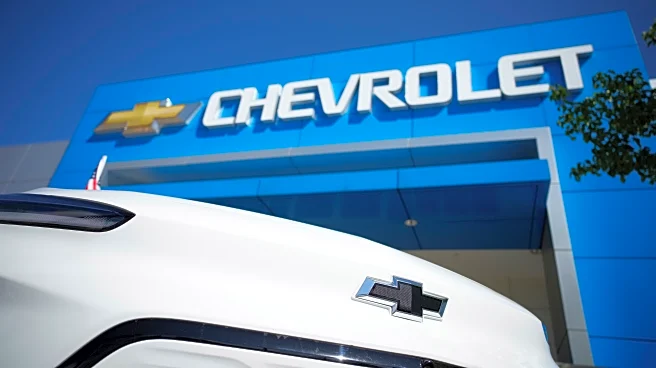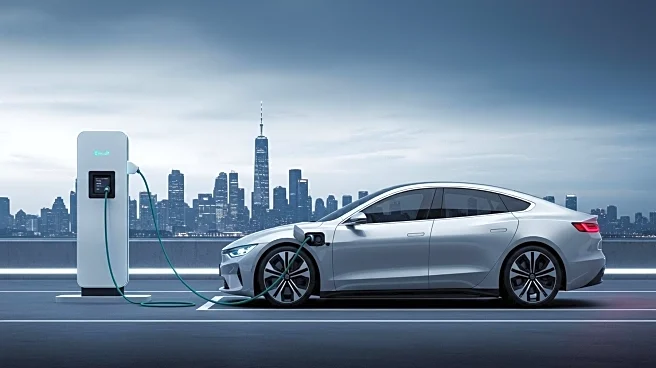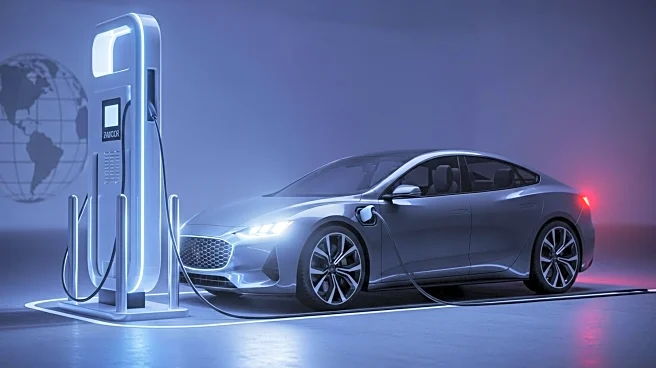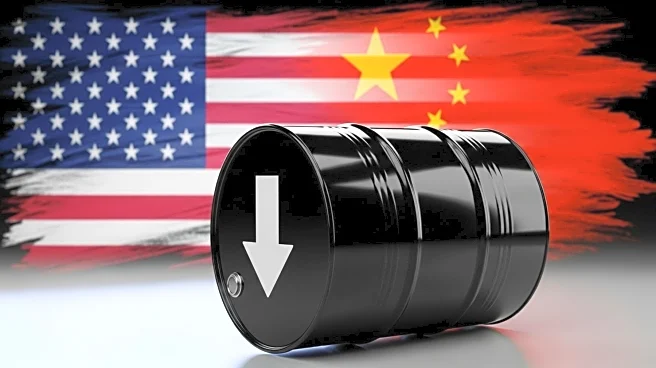What's Happening?
General Motors (GM) is set to record a $1.6 billion negative impact in its upcoming financial quarter due to the reduction of tax incentives for electric vehicles (EVs) and the easing of emission regulations in the United States. The clean vehicle tax credit, which previously offered $7,500 for new EVs and up to $4,000 for used ones, ended last month. GM, a leader among U.S. automakers in transitioning to an electric fleet, disclosed in a regulatory filing that it will incur non-cash impairment and other charges totaling $1.2 billion due to adjustments in EV capacity. Additionally, the company will face $400 million in charges related to contract cancellation fees and commercial settlements associated with EV investments.
Why It's Important?
The financial hit to GM underscores the challenges faced by automakers in adapting to changing regulatory and economic environments. The reduction in tax incentives for EVs could slow the adoption of electric vehicles, impacting GM's strategic shift towards electrification. This development may also influence other automakers' investment decisions in EV technology. The easing of emission rules could lead to increased production of traditional combustion engine vehicles, potentially affecting the overall progress towards reducing carbon emissions in the automotive industry. Stakeholders, including investors and environmental groups, will be closely monitoring the implications of these changes on GM's financial health and environmental commitments.
What's Next?
GM has warned of potential additional financial impacts as it continues to adjust its production strategy. The company is likely to reassess its investment in EV technology and capacity, which could lead to further operational and cash flow challenges. The realignment of EV capacity does not affect GM's current retail portfolio of Chevrolet, GMC, and Cadillac EVs, which are expected to remain available to consumers. However, the broader industry may see shifts in production priorities and investment strategies as automakers navigate the evolving regulatory landscape.


